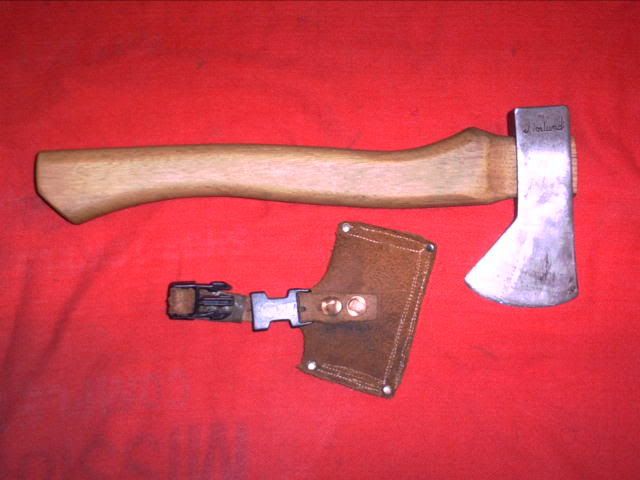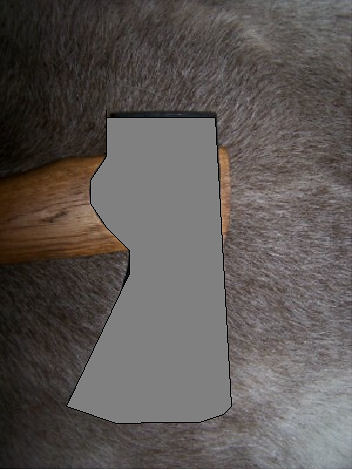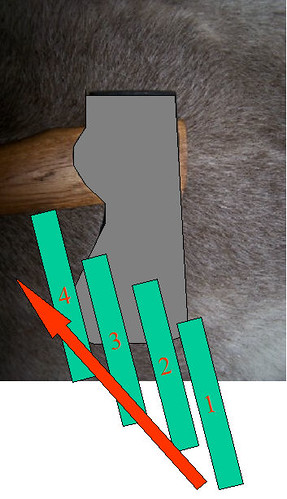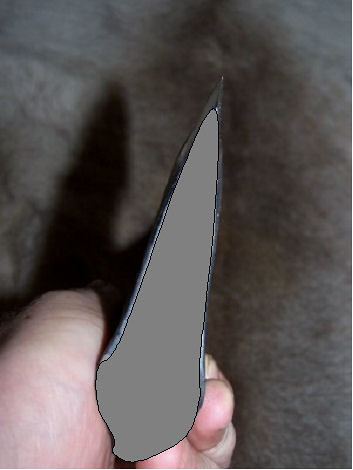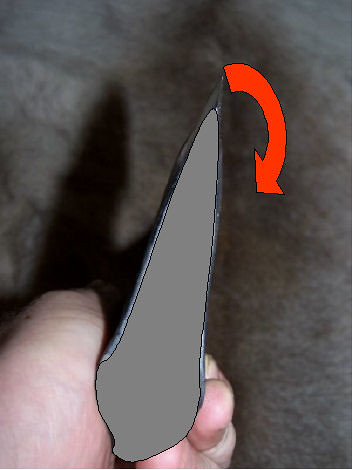why the pocket axe when the small forest axe will do the job?
That's a really good question with answers which will be difficult to accept for many.
Living here on the northern BC coast, I get lots of opportunites to use axes. We have some beautiful trails, but they only stay in existence if people clear all the fallen trees etc. Since I have very limited time, I carry a larger axe every time I go out - in order to do a bit of clearing on each trip. There's always a huge axe behind the seat of the truck, too to deal with any trees across logging roads.
So it's a very logical question as to why I'd want to carry a tiny hatchet along when I have something which is many times more capable. Tiny hatchets are a pain too, because you have to practise with them all the time to have faith in them. Well I still do and I've done lots with them.
Lots of times I've been down on one of the beaches making a fire to warm up, dry up and brew up and I've questioned using the little hatchet when I have a big tool sitting right there which will make the job trivial. Luckily this place is pretty much wilderness so I don't get onlookers who would really question my sanity!
I practise with the little axe, though, because I'd rather practise when I'm still in one piece than do the practising when things go bad. Then I will need to be practised up, already.
In my experience, things will go badly only after you've put down your pack and axe somewhere and just taken a walk to look at something. That's when you depend on what's attached to you. It's easy at this point to slip into the "well I'd never put down my big axe" way of thinking - but you will. Last summer when I was hauling logs I couldn't carry the big axe too - and sure enough I took a fall. that's simply the way things work in the real world. Naturally the log rolled over me and since I had a rope over my shoulders - dragged me a bit. But the original notion was that since I'd got the log up a steep slope and was only hauling it along a trail things were totally safe... I was fine but a person never knows when they're going to need something right at hand to make splints and crutches with. I have so many axes, but not one of them comes when I whistle for it - so much for axe training!
I found myself not carrying a larger hatchet constantly on me when working with larger axes - the bigger hatchet gets in the way. Sometimes though I just go for a walk and leave the axe behind because I know that I simply don't have time to do any chopping. It's tempting then to just take the tiny hatchet. That's when I have to tell myself not to be lazy and foolish because a bigger hatchet is easily carried in those circumstances and will do far more.
I used to think that as long as I had a Mora with me I'd be fine. Here though things are wet and so far more difficult: I'll take the biggest thing that I know I'll carry on me, and that I have confidence in. Lots of people won't have much confidence in tiny hatchets - and if you don't have confidence when you are capable, it can only be worse when you've had an accident so it's worth figuring just what you can carry that you are sure of. If that happens to be an axe, then it's surely worth examining how often you do get further away from it than you'd care to drag yourself. I'd suspect that like me it's more time than you'd think, because I used to believe axes were the total solution.
I'm sure happy if I've inspired people to try axes! It's going to take lots of us to make sense of them. Conditions vary too, so it's more than likely that what I write doesn't make much sense to people in drier or hardwood locations.

